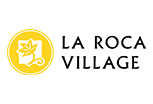There was a time when rough and wise hands were in charge of rural constructions, fitting one stone to the next with mastery, studying weights and measurements carefully because no bonding material was used. The dry stone huts were used to protect the peasant farmers from the rain and keep tools and livestock safe and dry. In the middle of the Cistercian Route, in the town of Pla de Santa Maria, we can follow the Route of Capona, featuring excellent examples of this heritage surrounded by cultivated fields, primarily vineyards. This is an almost flat path, just over two kilometres long, that you can walk or cycle. As well as huts, we will see barriers and buildings used to store rainwater. In 2018, UNESCO inscribed the architecture and culture of dry stone on the Intangible Cultural Heritage list.

















